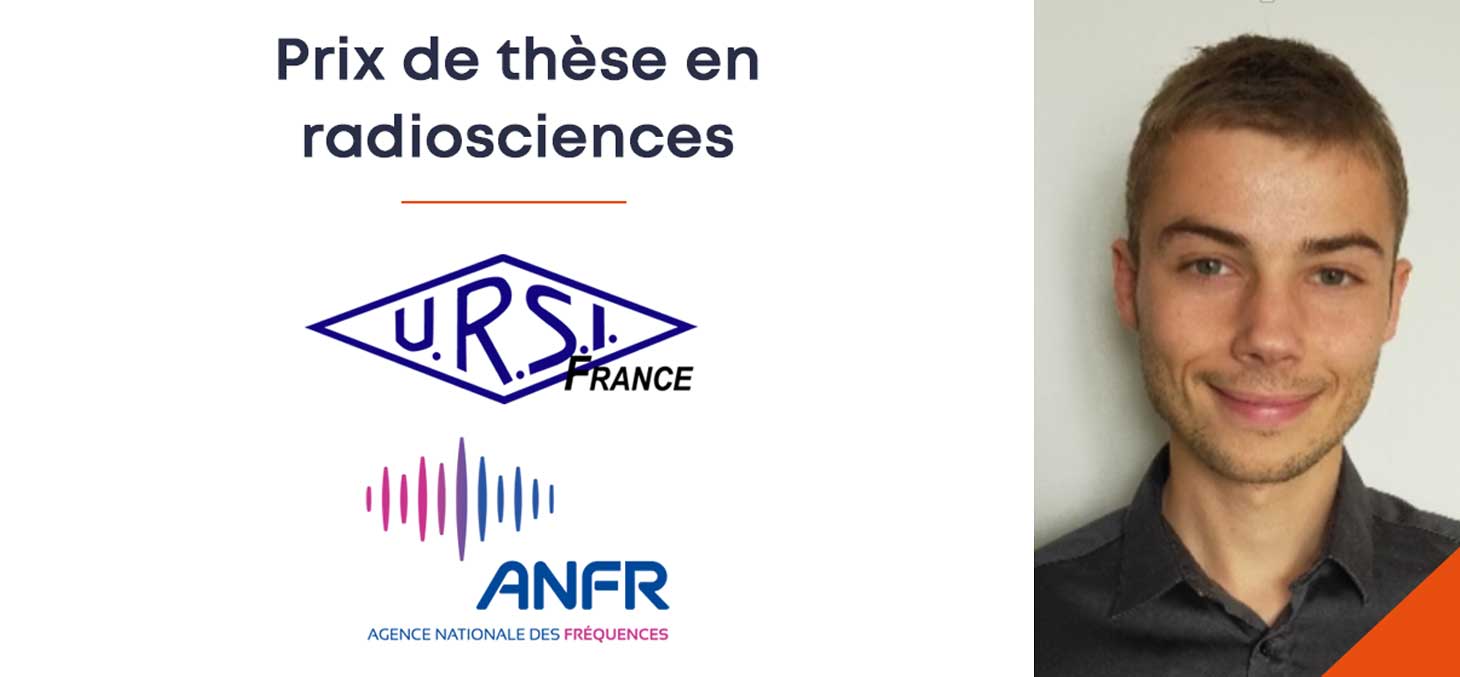- Share
- Share on Facebook
- Share on X
- Share on LinkedIn
Accolade/Award
On May 13, 2022

Congratulations to Guillaume Godefroy, winner of the 2022 Thesis Prize in radioscience. His thesis: "New approaches for photoacoustic imaging of blood vessels: quantitative 3D imaging of fluctuations and reconstruction assisted by deep learning", defended on October 12, 2021.
Imaging of the vasculature is of considerable interest for multiple health applications, including pathology diagnosis, surgical guidance, treatment monitoring and biomedical research. While several modalities are currently used to image the vasculature, the use of bimodal devices combining photoacoustic imaging (PA) and ultrasound imaging (US) is a promising approach. The sensitivity of PA imaging to hemoglobin and the emergence of flow-sensitive methods in US imaging allow precise mapping of the vascular network within biological tissues at depths of several cm and resolutions down to the tens of µm. The excellent temporal resolution of US imaging allows to obtain a multitude of quantitative information on the blood flow dynamics. Through spectroscopic approaches, PA imaging provides valuable data on the imaged molecules such as their concentrations, and biological indicators of interest such as oxygen saturation can be mapped. The work carried out during this thesis consists in the implementation of a device allowing the simultaneous realization of 3D images with these two modalities, and the development of new methods of reconstruction and processing in PA imaging. These methods aim at correcting the so-called visibility artifacts and those related to the use of parsimonious sensor networks on PA images. In a first approach, the statistical analysis of the fluctuation of the PA signal related to the blood flow allows to correct these artifacts and to obtain an image proportional to the absorbed energy. The approach is applied in vivo on chicken embryos and a quantitative measurement of oxygen saturation is obtained. In a second approach based on deep learning, a neural network has been implemented, allowing to resolve these artifacts from a single acquisition once the network is trained. The architecture used allows to include an estimation of the uncertainty of the prediction, providing the localization of the so-called hallucination errors. First demonstrated in 2D on test samples, the approach is then applied in 3D and first experimental results on the chicken embryo are presented.
Jury :
Reporter : Monsieur Damien GARCIA, Research Officer, INSERM
Reporter : Monsieur Mickael TANTER, Director of Research, INSERM
Reviewer : Madame Lori BRIDAL, Director of Research, CNRS
Reviewer : Monsieur Antoine DELON, University Professor, Université Grenoble Alpes
Reviewer : Monsieur Christophe MOSER, Associate Professor, EPFL
Thesis Direction : Emmanuel Bossy and Bastien Arnal (Co-Supervisor)
Date
- Share
- Share on Facebook
- Share on X
- Share on LinkedIn